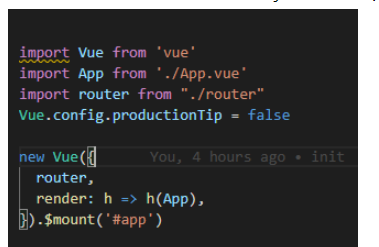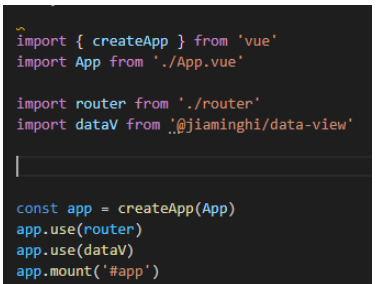
npm install vue-router@4.0.0-beta.13
Let’s first compare the difference between main.js in vue2 and vue3: ( The first picture is vue2, the second picture is vue3)


It can be clearly seen that the Vue objects we commonly use in vue2 , "disappeared" in vue3 due to the direct use of the createApp method, but in fact the app created using the createApp method is a Vue object. Vue.use(), which is often used in vue2, can be replaced by app in vue3 .use() is used normally; in the main.js file of vue3, use vue-router to directly call the router using the app.use() method.
Note: The route name exported by the import routing file is from "corresponding routing file relative path", the project directory is as follows (vue2 and vue3 are the same):

import { createRouter, createWebHashHistory } from "vue-router"
const routes = [
{
path: '/',
component: () => import('@/pages')
},
{
path: '/test1',
name: "test1",
component: () => import('@/pages/test1')
},
{
path: '/test2',
name: "test2",
component: () => import('@/pages/test2')
},
]
export const router = createRouter({
history: createWebHashHistory(),
routes: routes
})
export default router<template>
<router-view></router-view>
</template>
<script>
export default {
name: 'App',
components: {
}
}
</script>
<style>
#app {
font-family: Avenir, Helvetica, Arial, sans-serif;
-webkit-font-smoothing: antialiased;
-moz-osx-font-smoothing: grayscale;
text-align: center;
color: #2c3e50;
margin-top: 60px;
}
</style>We introduce useRoute and useRouter where we need to use routing (equivalent to $route and $router in vue2)
<script>
import { useRoute, useRouter } from 'vue-router'
export default {
setup () {
const route = useRoute()
const router = useRouter()
return {}
},
}</script>Example: Page jump
<template>
<h2>我是test1</h2>
<button>toTest2</button>
</template>
<script>
import { useRouter } from 'vue-router'
export default {
setup () {
const router = useRouter()
const toTest2= (() => {
router.push("./test2")
})
return {
toTest2
}
},
}
</script>
<style>
</style>The above is the detailed content of How to use vue-router in vue3. For more information, please follow other related articles on the PHP Chinese website!




